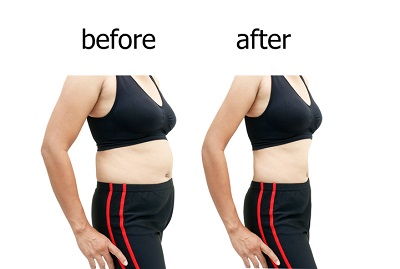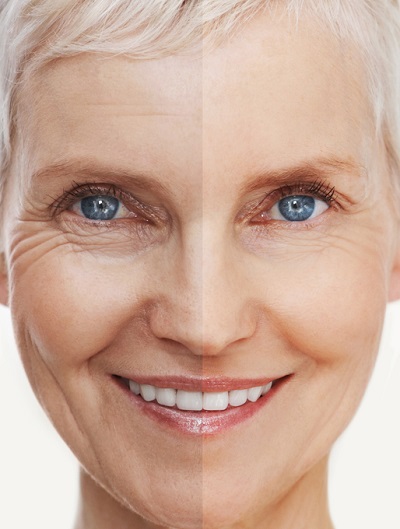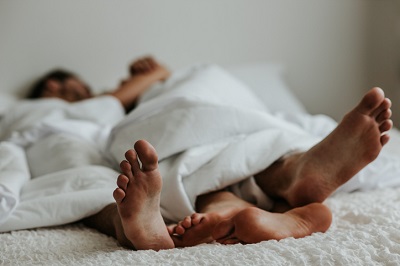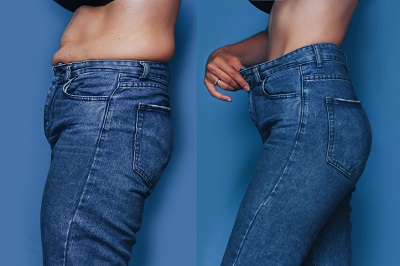HGH is a critical anabolic hormone that is required to maintain healthy skin and hair, grow lean muscle, and burn fat at optimal rates to keep the body lean, strong, and healthy. Below, we will explore the many physical benefits of HGH replacement therapy for adults with growth hormone deficiency (GHD).
How Low HGH Levels Negatively Affect Physical Appearance
To appreciate the importance of HGH for wellness and prime physical condition, it’s first necessary to understand the many ways in which HGH promotes optimal health. The numerous health benefits of HGH – many of which improve physical appearance — include:
- Thicker hair and skin.
- Increased collagen production resulting in fewer, less noticeable wrinkles.
- Greater lean muscle mass.
- Reduced body fat.
- Improved libido (sex drive).
Increased energy levels.
The Disturbing Prevalence of Growth Hormone Deficiency (GHD)
Growth hormone deficiency (GHD) is a clinical condition characterized by limited production and release of human growth hormone (HGH) by the pituitary gland. Declines in HGH often occur slowly over time, with higher rates of GHD recorded among older adults.
HGH deficiency causes several chronic conditions and unwanted changes to physical appearance in those who experience the condition. The detrimental effects of GHD on appearance and health can include:
- Buildup of body fat, especially around the abdomen (aka “belly fat” or “visceral fat”).
- Bone weakening and loss of bone density (osteoporosis).
- Muscle loss (sarcopenia).
- Altered heart function.
- Loss of stamina (cardiovascular function).
Common Issues Before and After HGH Replacement Therapy
HRT patients often have specific concerns regarding the improvements in physical appearance and/or health benefits that they want to achieve. Here are the most common areas of focus for those who receive HGH therapy and the benefits that you can expect to achieve through your own course of therapy.
Weight Problems (Body Fat)
 The top aim of many women with GHD who receive HGH therapy is to lose weight. Body fat accumulation is both harmful to physical appearance and dangerous in the long term to health. Untreated obesity, in fact, increases an individual’s risk of chronic illness and early death exponentially. HGH therapy, when appropriate, can help reverse unhealthy weight gain.
The top aim of many women with GHD who receive HGH therapy is to lose weight. Body fat accumulation is both harmful to physical appearance and dangerous in the long term to health. Untreated obesity, in fact, increases an individual’s risk of chronic illness and early death exponentially. HGH therapy, when appropriate, can help reverse unhealthy weight gain.
- Weight/body fat problems before HGH therapy: Individuals with GHD have significantly higher body fat percentages on average than the general population.
If you have low HGH levels, you will likely notice a particularly noticeable buildup of fat in the midsection. This type of fat is called “visceral fat.” In terms of health impacts, visceral fat is the most harmful type of body fat. Higher levels of visceral fat are associated with certain types of cancer, increased risk of insulin resistance and diabetes, and adverse cardiovascular events such as heart attack and stroke.
- Resolution after HGH therapy: Research backs up the promise of HGH therapy to reduce overall fat, especially belly fat. A clear negative correlation exists between HGH levels and visceral fat, meaning that more HGH results in less visceral fat accumulation.
Muscle Mass
While a slimmer physique is often the primary benefit that attracts women to HGH therapy, men are typically most intrigued by the possibility of building extra muscle mass with HGH. As an anabolic hormone, HGH stimulates the production of lean muscle in partnership with another “building” hormone called insulin-like growth factor 1 (IGF-1).
 HGH leaves the pituitary gland where it is manufactured, travels to the liver, and stimulates release of IGF-1. From there, as a pair, HGH and IGF-1 travel throughout the body, stimulating healthy tissue growth (including muscle tissue). In men and women with enough HGH and IGF-1, the muscles get all of the hormonal stimulation that they require to grow and repair themselves when needed.
HGH leaves the pituitary gland where it is manufactured, travels to the liver, and stimulates release of IGF-1. From there, as a pair, HGH and IGF-1 travel throughout the body, stimulating healthy tissue growth (including muscle tissue). In men and women with enough HGH and IGF-1, the muscles get all of the hormonal stimulation that they require to grow and repair themselves when needed.
However, the opposite is true for those with HGH deficiencies; inadequate supplies of HGH and IGF-1 result in muscle loss, often leading to a condition called ‘sarcopenia.”
- Muscle mass before HGH therapy: As men and women move into middle age – with related drops in endogenous supplies of critical hormones for building and maintaining muscle such as HGH and testosterone – muscle loss often occurs as one of the most noticeable side effects next to fat gain.
Despite how intensely a person trains or how optimal their eating plan, building an attractive, functional musculature is impossible without enough HGH.
- Resolution after HGH therapy: The men and women with diagnosed HGH deficiencies who receive therapy notice a boost in muscle mass and strength within a matter of months.
Clinical research into the muscle-building effects of HGH show that HRT triggers substantial gains in both muscle size and strength.
Skin and Hair Issues
The skin and hair depend on human growth hormone for optimal structure, function and appearance: “Clinical observations and analysis conducted in animal experimental models at a molecular level have shown the important role played by the GH system in the development, maintenance and repair of the skin.” Together, growth hormone receptor sites (GHR), growth hormone binding protein (GHBP), and the growth hormone molecule itself foster healthy skin and hair growth.
 Most importantly, HGH boosts collagen production, a type of protein critical for hair and skin health.
Most importantly, HGH boosts collagen production, a type of protein critical for hair and skin health.
- Skin and hair issues before HGH therapy: Skin may appear saggy, dull, oily and generally “tired,” adding a decade or more to physical appearance. As HGH levels further decline, wrinkles deepen and skin tone deteriorates.
Low HGH levels also wreak havoc on hair health. Prior to therapy, hair may also appear progressively more haggard, thinner, and weaker over time.
- Resolution after HGH therapy: Within three months of therapy, wrinkles become significantly less noticeable or may fade completely. Skin appears brighter, more supple and generally more youthful.
Sex Drive (Libido)
Many people mistake declining sex drive as an inevitable part of the aging process. However, there is no determinative biological law that dictates that sex drive must decrease with age. The reality is that many aging Americans – many with hormone levels that have been optimized through therapy — enjoy a rewarding sex life deep into retirement.
As researchers have explored in recent years, HGH is one critical piece of the sex drive puzzle. It’s no coincidence that individual with higher levels of HGH also sustain a high sex drive sustained throughout the aging process compared to those with low HGH.
- Sex drive before HGH therapy: Low sex drive can be devastating both for those who experience it – both in terms of self-confidence and in terms of personal relationships.
As one GHD patient put it during a study into the effects of HGH deficiency on quality of life in general and sex drive in particular:
“There is zero sex drive whatsoever… I can look at my girlfriend and she’s a really adorable, cute, sweet, beautiful person and I’m taken aback by her, but there is not the impetus to go any further. It just takes a lot of energy to cross that bridge.”

- Resolution after HGH Therapy: Men and women who receive HGH therapy consistently report a renewed interest in sex. Those in marriages also express their satisfaction at a restored spark in the bedroom that may have been lacking due to an untreated HGH deficiency.
Leila, 54, offers her experiences with HGH therapy and sex drive:
“Menopause hit me like a ton of bricks… I was pretty surprised when I found out how low my growth hormone levels were. Since starting human growth hormone therapy, I feel like a new woman. I am happier, I sleep better at night, and my night sweats and hot flashes are all gone. Best of all, I am now the one initiating sex all the time.”
Energy Levels
One of the first health improvements that HGH therapy patients see after beginning therapy is a noticeable uptick in energy levels that last throughout the day.
- Energy levels before HGH therapy: Whereas an individual with an extreme HGH deficiency may feel exhausted at all times of day, patients who supplement their HGH levels report sustained energy from sunup to sundown – affording more opportunity to make the most of the day and get the most out of life.
At its most extreme, HGH deficiency can make the simple act of waking up to face the day a serious challenge, such as in the case of one patient with abnormally low levels of the hormone:

“Well, I used to work 40 hours a week. I can’t do that anymore. I work maybe 15, 20 hours, you know because I’m always tired. I wake up tired and just can’t do much.”
- Resolution after HGH therapy: For the majority of HGH-deficient patients who undergo an HRT regimen, energy levels rebound in a huge way.
The results of several clinical studies into the boost in energy levels through HGH therapy support the lived experiences of patients who receive it:
“After randomized, double-blind, placebo-controlled trials of GH treatment, significant improvements have been seen in energy levels and emotional reaction… The current study demonstrates a sustained improvement in energy levels [following therapy].”
Bone Health
Maintaining bone density is important for preserving athletic performance, aiding in long-term mobility, and preventing fractures. HGH protects bone health and prevents bone-related conditions such as osteoporosis.
- Bone health before HGH therapy: After age 50, the risk of osteoporosis, a condition in which the bones are dangerously weakened, increases by several factors.
Left untreated, progressive bone weakening greatly heightens the likelihood of debilitating injury and/or loss of mobility.
- Resolution after HGH therapy: The research into the relationship between bone health and HGH levels indicates that HRT with HGH is “beneficial due to the increased bone metabolism and improved bone geometry which occurs with GH.”
In particular, the benefits are crucial for aging populations, including women in menopause:
“The substantial increase of bone remodeling achieved with GH may be helpful during late post-menopause with decreased bone turnover and impaired osteoblastic function.”
HGH Affects Men and Women Differently
Important biological sex differences between men and women inform the potential risks of HGH deficiency and, in turn, the potential benefits of HGH therapy. Here are a few of the top ways that men’s and women’s bodies differ when it comes to HGH, hormone replacement therapy, and its benefits:
- Women have significantly greater natural HGH levels than men (in one study, 9.9mU/l in women vs. 1.8 mU/l in men).
- HGH supplementation produces a greater spike in IGF-1 levels in men compared to women (important for muscle gains).
- Women have a four times greater risk of developing osteoporosis compared to men (often resulting from HGH deficiency).
Men are at greater risk of potentially fatal cardiovascular disease (heart disease) compared to women – again, a chronic health condition that HGH deficiency contributes to and that HGH therapy can help to correct.

